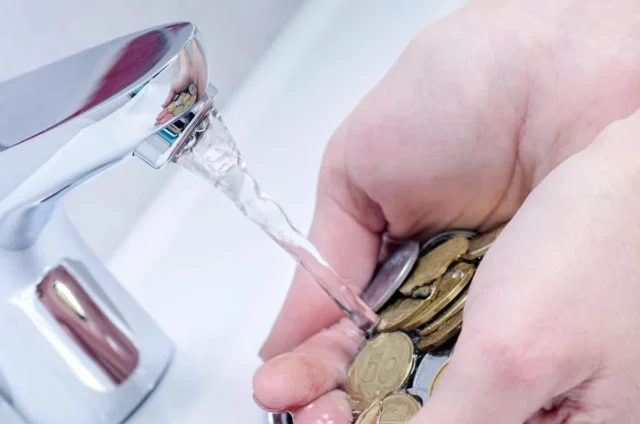Proposed Water Tariff Increase in Kyiv: What It Means for Residents
In a notable development that could hit the wallets of many households, Kyiv’s public utility company, Kyivvodokanal, has put forward a plan to significantly increase the tariffs for centralized water and sewage services. This proposal, submitted for approval to the National Commission for State Regulation of Energy and Public Utilities, suggests that rates could effectively double over the upcoming months—an alarming prospect for many.
Breaking Down the Costs
Starting in April, if implemented, the price of centralized water supply will soar to 17.57 UAH per cubic meter (excluding VAT). Additionally, the charge for sewage services will rise to 16.41 UAH per cubic meter. Combined, that means the total cost will be 33.98 UAH per cubic meter before VAT—a staggering 40.78 UAH when VAT is included. To put this into perspective, imagine a family of four using around 10 cubic meters of water monthly; that translates to an increase from approximately 340 UAH to over 400 UAH just for water and sewage services each month.
But it doesn’t stop there. In July, a second wave of increases would kick in, raising the cost of water supply to 21.42 UAH per cubic meter and sewage charges to 17.66 UAH, bringing the total to 39.08 UAH pre-VAT and 46.90 UAH including VAT. For those keeping track, that’s nearly a 50% jump in just a few months!
Understanding the Drivers Behind the Increase
So, why are these tariff increases being proposed? Primarily, they are driven by climbing operational costs faced by the utility, which reflects a wider trend seen in utility markets across the globe. In fact, a recent study from the World Bank found that nearly 60% of utility companies in transition economies have reported increased costs related to infrastructure maintenance and service provision.
What This Means for Residents
- Budget Burden: Families will need to reassess their budgets. A sudden increase in water and sewage expenses can strain finances, especially for low-to-middle-income households.
- Community Impact: Businesses that rely on consistent water supply may face increased operational costs, leading to higher prices for consumers.
- Investment in Infrastructure: On a positive note, the city could use these additional funds to improve infrastructure, ensuring more reliable access to clean water—a crucial factor in maintaining public health.
Advice for Residents
With this impending increase, now’s the time for residents to take proactive steps. Here are some practical tips:
- Monitor Water Usage: Keep track of your water consumption. Simple changes like fixing leaks or using water-efficient appliances can lead to significant savings.
- Community Engagement: Stay informed and involved. Attend community meetings and voice your opinions—local authorities need to hear from residents about the financial strain these increases could cause.
- Explore Alternatives: Consider sustainable options like rainwater harvesting or greywater systems where applicable. Not only can they reduce dependency on municipal water, but they can also lower your overall costs.
Looking Ahead
As discussions around these proposed tariff changes continue, the outcomes will undoubtedly shape the financial landscape for Kyiv residents. By staying informed and engaged, individuals can better navigate these potential challenges and advocate for a balanced approach that ensures both sustainability of water services and the economic wellbeing of the community.





